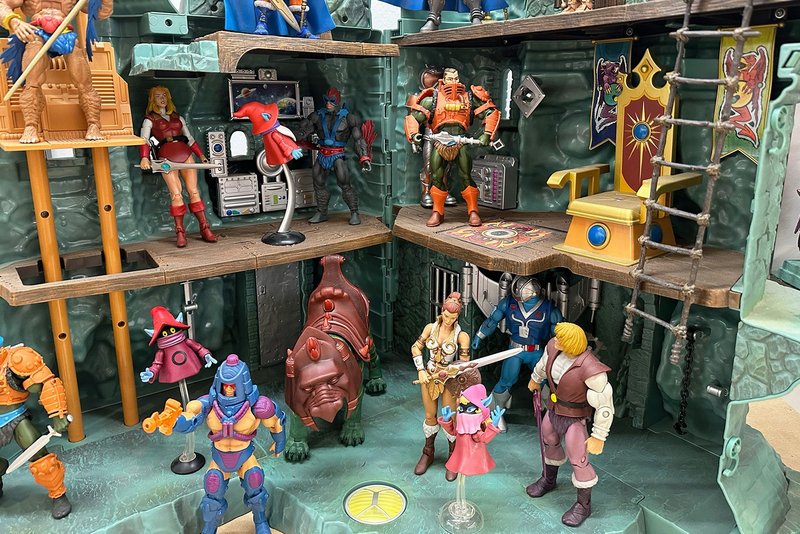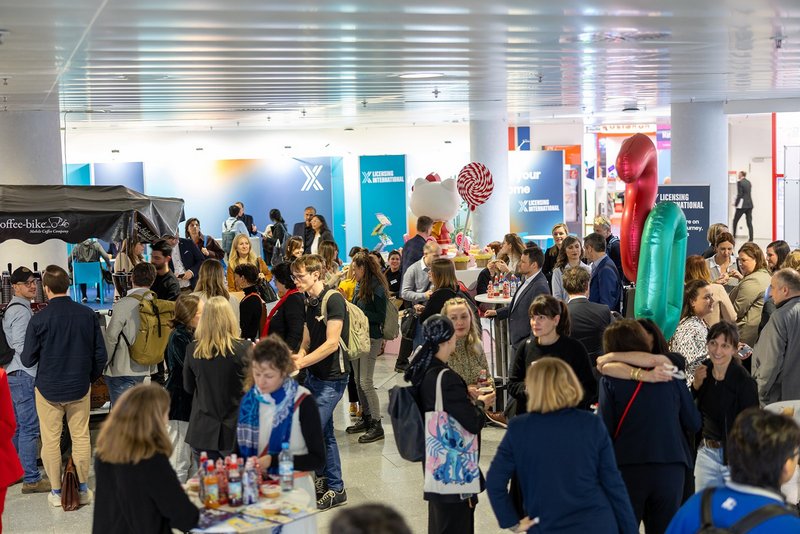
The fine art of licensing
A hit as a film, a flop as a game? An insider’s view from Ute Strauss

By Sibylle Dorndorf
It‘s not just at Christmas that they make the cash register ring. What are they? Licensed articles. As reliable sources of revenue, they’re in demand all year round, not only among kids but also among so-called “kidsters” or “kidults”. In the USA alone, the world’s largest toy market, this target group accounts for 25 per cent of total annual sales. The trend is rising and the number of unreported cases is likewise high. How many purchasing decisions are made by one’s inner child also depends to a large extent on the “licence to play”. When it comes to toys, collectibles or merch, a growing number of adults are embracing their inner child. More than half of the total sales of Star Wars products are accounted for by consumers aged 12 and up – and Pokémon is catching on with older fans, too.
Licences as a sure thing
Licences not only drive growth across all industries and target groups, but they’re also an effective way of making brands interesting and imbuing products with new content and images. This all arouses desires in consumers. The most popular licensed articles sell out fast – and not only at Christmas time.
What’s hot and what’s not?
If you rely on licences, you have to be quick and, above all, always keep a keen eye on the popularity of a topic in the media. Film releases such as Wicked, Sonic and Moana, for example, will once again cause a stir in the last quarter of this year. This will also have an impact off the screen. And in 2025? The return of Jurassic World, Superman, James Cameron’s Avatar, The Fantastic Four, Captain America and Gabby’s Dollhouse, as well as live-action films based on Minecraft and Stitch, are already on the horizon and offer people plenty to look forward to in the coming year.
The dos and don’ts of licensing
Let’s get one thing clear: licences are a billion-dollar business. But you can also lose billions if you make the wrong move when acquiring a licence. Many a brand owner has already lost a pile of money with a “bad buy”.
For Spirit of Play, licensing expert Ute Stauss, managing director of Licensing International Germany since February 2024, gives us some insider tips for when it comes to buying licences.
Interview

Ms Stauss, you’re an expert in the licensing of consumer and lifestyle products. How much do licences attract consumers compared to unlicensed products?
Licensed products usually exert a strong appeal among consumers compared to unlicensed products. This is because they represent well-known brands, characters or content that generate some emotional connection to them or exude trustworthiness. Licensed products benefit from brand recognition and the positive image of the licensor, which often makes them more desirable and can result in higher sales. These products offer consumers a form of quality assurance and authenticity, which is sometimes lacking in unlicensed products.
Have licensed products become more desirable in recent years?
Our annual study shows that consumers are willing to pay more for licensed products. Particularly in sectors such as toys, clothes, entertainment and sports, licences are a decisive sales factor.
In 2023, consumers proved that they are more loyal than ever to the brands, characters and features they love. In fact, as you already mentioned, the global licensing industry once again outperformed the overall global retail market, which just goes to show that brands make a real difference, regardless of the product category.
What does this mean in figures?
We’ve completed our 9th annual study of the global licensing industry and the results are encouraging. Global sales of licensed products stood at $356.5 billion, marking another year of growth. In figures, this means an increase of 4.6 per cent compared to the $340.8 billion in 2022. So, yes, licences are popular with consumers and have become even more desirable.
Which age or target groups are particularly attracted to licensed products?
Licensed products are particularly popular with children and kidults. Children love them because they can identify with their favourite characters, whereas kidults often have some nostalgic or cultural connection to their brands. In both cases, licensed products offer strong emotional added value, which significantly increases their attractiveness compared to unlicensed ones.
Kidults is the new buzzword when it comes to new target groups. Which licensing themes appeal to adults in particular?
When it comes to kidults, topics, brands or characters from the areas of nostalgia, fandom or gaming are most popular. They range from Star Wars, Mickey Mouse and Superman right through to Harry Potter or other childhood heroes. Other favourites are fantasy figures or gaming avatars.

And what are the kids’ favourites?
These days, children don’t just focus on one or two major themes. The range of themed worlds, characters and IPs for children is now extremely wide-ranging and complex.
Take, for example, the target group of “boys” in the toys sector. You have to decide whether the target group is more interested in the topics of “superheroes”, “manga/anime”, “space”, “sports” or “fantasy creatures”. So you can see that you have to examine things more closely here, too. But Marvel, Star Wars, Pokémon and even football are still among the top themes. It’s just that other themes come along at an ever faster pace.
For many years, brands believed that licences should be treated with caution. Now, though, big players are happy to get involved with them. When do brands and licensing themes cross-fertilize each other and when is the licence more counterproductive for the brand?
Licences can fertilize brands if they are a good strategic fit; they can strengthen the brand image, and appeal to new target groups. Successful partnerships are founded on long-running, well-established franchises with a strong fan base that encourage creativity and fun.
That being said, licences can, however, be counterproductive if they don’t fit in with the target audience, over-license the brand, or restrict creative freedom. Striking the right balance between licensing themes and standalone products is the key to success.
Could you explain that in more detail?
Well, not all licences suit strong brands – especially if they’re aimed at different age groups or target markets. For instance, if a licence is based on a theme that is of interest to an older target group or a very specific audience, then it may seem of no interest whatsoever to the typical target group. The series Game of Thrones would be one example: it’s got a high age rating and wouldn’t fit in with the brand essence of children’s toys and other items for children.
Both retailers and the toy sector are still relatively hesitant when it comes to selecting new licensing themes for individual product lines or the whole product range. Do you have any tips as to how you can avoid flops?
Getting to grips with a licensing theme requires you to thoroughly analyse the target group, market trends and brand fit. Strategic partnerships, creative product development and well-planned marketing strategies are crucial if you want to fully exploit the potential of a licence and so avoid flops. A balance between the benefits of the licence and your own brand identity as well as planning for the long term all help to minimise the risks and ensure enduring success.
One successful way to avoid flops is to correctly translate the theme of the licence into the product design, that is to say into innovative product concepts or product diversification. Such as limited editions alongside the classic product line.
But a good licence isn’t enough; the product also has to be well marketed and positioned. And both sides, the licensor and the licensee, have to invest in marketing; that’s very important.

I won’t ask you for your insider tip, but it would be interesting to know what tendencies are emerging in licensing topics and what you see as the underlying trends.
In our study, we saw particularly strong growth rates in the clothing, beauty, sports, location-based entertainment and gaming categories. Finally, I‘d like to highlight a few examples from the location-based entertainment sector, which has increased by an impressive 13.5 per cent compared to 2022. Since the end of the pandemic, people have had an even greater appetite for real-life experiences. This category includes events such as the “Peppa Pig Surprise Party”, the “Nerf Action Xperience”, “Sesame Street Learn & Play Centre” and the Barbie “You Can Be Anything” festival.
Or take Adele’s concert in Munich this summer. They created an “Adele World” specifically to offer concert-goers a comprehensive experience to make the star that is Adele more tangible and more approachable in a very special way. This ranged from merchandise shops, multimedia installations and catering options – anything and everything that could make the concert experience even more enjoyable.
And this, of course, manifests itself in the fact that people who take part in such events often have a strong emotional need to enhance their experience by buying additional licensed products to round off their overall experience.
Ms Stauss, thank you for these interesting insights into this fascinating market!
Save the Date: Licensing Summit 2024
Under the slogan of “Connecting Ideas. Creating the Future.”, the German-speaking licensing industry will meet up at the Licensing Summit 2024 in Munich on 7 November. The annual event organised by Licensing International Germany will take place in a new format and will be all about networking and exchanging information.
About the author
Sibylle Dorndorf has been covering the toy industry for almost 30 years. Most recently, the trade journalist was editor-in-chief of the TOYS magazine family at the Göller Verlag publishing house, Baden-Baden, Germany. Her passion: companies that reinvent themselves, brands that position themselves credibly, people who have something to say and products with a future.




![[Translate to Englisch:] [Translate to Englisch:]](/fileadmin/_processed_/4/b/csm_20240227_Teaser_fd95b8f94a.jpg)